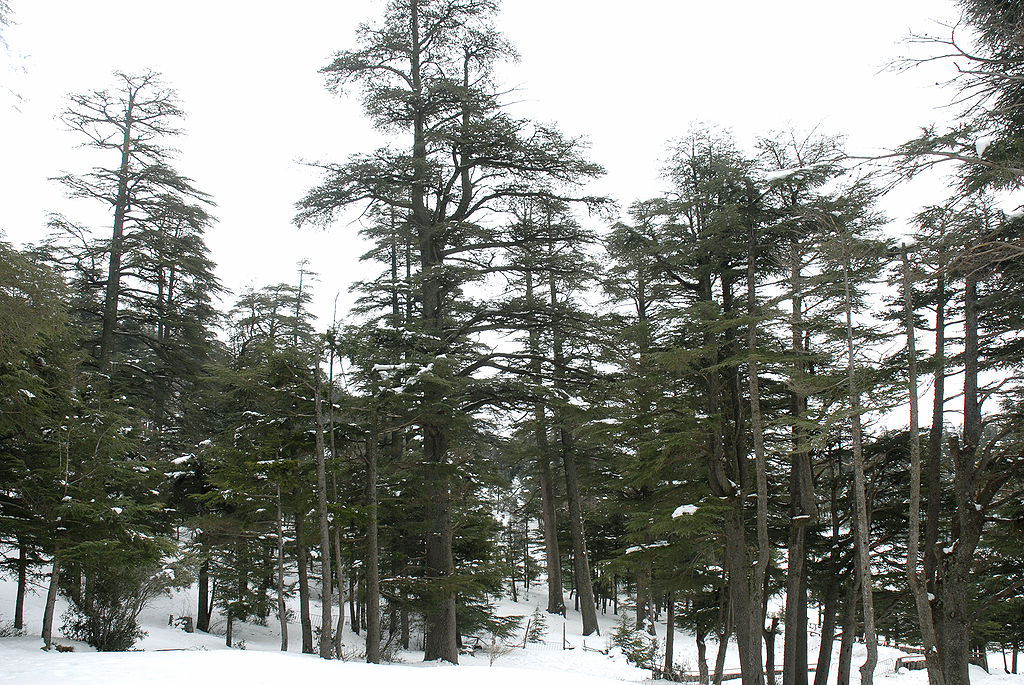True Cedars
Native to the Mediterranean region of Europe and the western portions of the Himalayan Mountains, cedars are relatively large, evergreen trees. They are not only important ecologically and for their commercial uses, but many cedars hold special cultural significance in their natural range.
The Name Game
Many species, including representatives of the genera Juniperus and Thuja, are bestowed with common names featuring the term “cedar.” In fact, the term “cedar” is applied to so many different types of trees that many tree professionals, farmers and botanists refer to trees of the genus Cedrus as “true cedars.” This represents yet another example in which use of the scientific (or botanical) name can help alleviate confusion.
Classification and Taxonomy
Taxonomists differ on the exact classification of the group, but most recognize four different species within the genus Cedrus: Deodar cedars (Cedrus deodara), Lebanon cedars (Cedrus libani), Cyprus cedars (Cedrus brevifolia) and Atlas cedars (Cedrus atlantica). It appears, according to the Gymnosperm Database, that Deodar cedars are the sister clade to the other three species. This means that while all four species share a common ancestor, Cyprus, Lebanon and Atlas cedars share a common relative that is not part of the Deodar cedar lineage.
Description
Cedars typically exhibit a pyramidal growth habit, and bear blue-green to light green needles. Unlike many other conifers, such as firs (Abies spp.) or white pines (Pinus strobus), cedars do not produce branches in whorls. Some cedars exhibit irregular growth forms, which can give them great character and visual interest.
The seeds feature interesting structures called resin blisters, which contain unpalatable substances. Presumably, these serve as a deterrent to squirrels and other seed-eating rodents. Once the cones mature, they open and fall apart to help scatter the seeds.
While some of the cedars are rather cold hardy, the Atlas cedar of North Africa is susceptible to damage in cold winter climates. Likewise, the various species exhibit different growth rates. Atlas and Lebanon cedars typically put on less than one foot of growth per year, while Deodar cedars are fast growers that will quickly outgrow insufficient planting spaces.
Common Uses
Cedar trees often thrive along the west coast of North America, and they make wonderful ornamentals. Although they usually remain much smaller in residential settings (between 40 and 70 feet in height and 20 to 30 feet in horizontal spread), some cedars grow to heights of 120 feet or more, so it is important to avoid planting them in restricted spaces. The graceful form of most cedars makes them excellent specimen trees, placed in an area that highlights their form. Several cultivars are available, including some very attractive pendulous forms, with drooping or weeping branches.
Cedar wood is famous for repelling moths; a fact which has led many to use cedar wood to construct closets and wooden items used in conjunction with clothing or shoes. The oils inside the wood give it a pleasant aroma, but these volatiles have allelopathic and insecticidal properties. Accordingly, cedar chips are often used as a pet bedding, in hopes that the aroma will cover offensive pet odors. However, care must be used, as some animals – particularly small reptile, amphibian and insect pets – can become sick or die upon exposure to cedar shavings. Additionally, many cedars – particularly fast-growing species, such as Deodar cedars – are also farmed for timber production. Because the wood takes oils and stains well, it is often prized for its handsome appearance.




